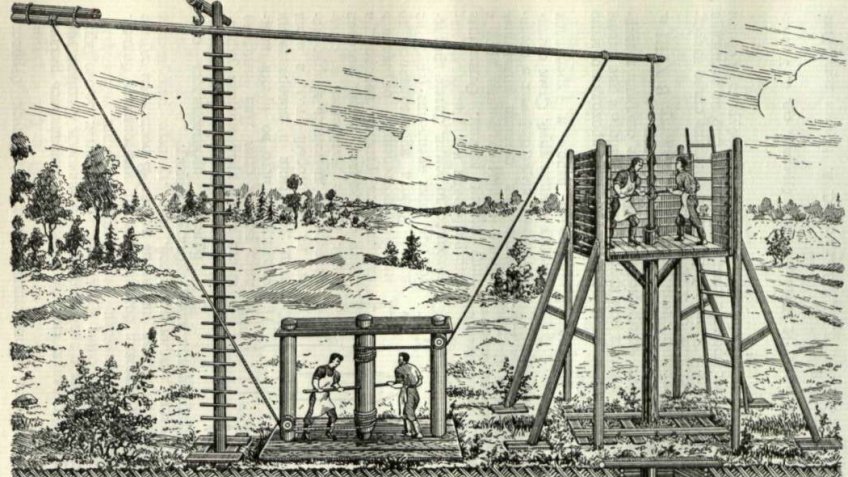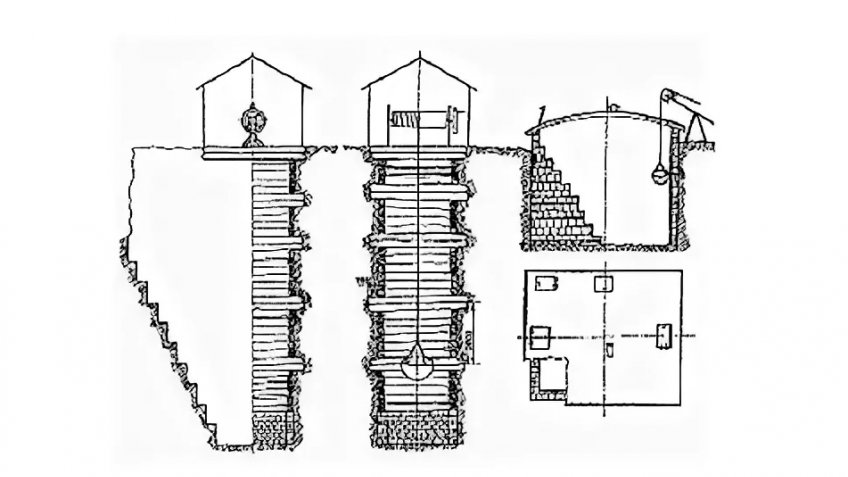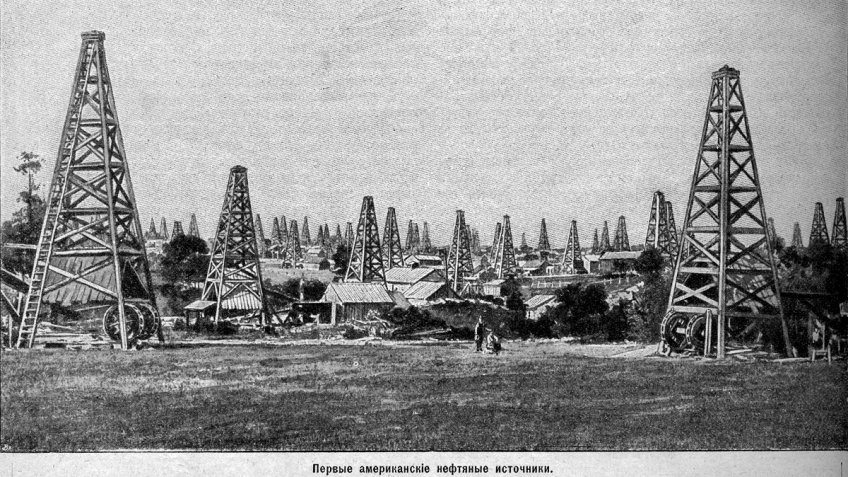
The first exploration well for oil is traditionally attributed to the Americans. They have devoted more than one film to the search for "black gold", cementing this stereotype. However, 20 years before the famous Pennsylvania discovery of Edwin Drake, a Russian geologist began to develop a project to extract raw materials by drilling.
In 1823, Nikolai Voskoboynikov was listed only the fourth of the graduates of the Mining Cadet Corps in terms of academic performance. Although he did not get on the marble plaque of honor, his name is associated with a number of breakthrough ideas in the development of hydrocarbon deposits.
According to the rules in force at the educational institution, all graduates after 4 years of study, in order to be acknowledged full engineers and achieve a rank, had to work for 2 more years at one of specialized enterprises. Cadet Nikolai Voskoboinikov was assigned to the Transcaucasian (Georgian) mountain expedition. The reports on the work that the young man sent to St. Petersburg amazed even experienced professors. The young man supplemented geological characteristics of minerals with data on approximate reserves and development conditions at the deposits. In addition, he complemented all this with accurate technical and economic calculations and an assessment of the expected profitability of their operation.
The scientists of the institute highly appreciated the research and appointed the recent student a corresponding member of the Mining Journal in the Transcaucasian region. This publication will celebrate its 195th birthday in 2020. The longest-standing technical journal in the world is published to this day. Among its authors are candidates and doctors of sciences, professors. What would happen today if articles of a 22-year-old guy who had just graduated from the institute and working somewhere in Khanty-Mansiysk on a drilling rig were printed from issue to issue in it, and all the professors would be delighted with them? And, meanwhile, it all went this way with Voskoboinikov.
At the end of the two-year term of practical training, Nikolai accepted the position of the director of the Baku and Shervan salt and oil fields. Had this happened a century and a half later, the engineer would have been dubbed as “oligarch”, but in the first half of the 19th century no one could imagine the real value of oil. By that time, petroleum had been mined in Azerbaijan for 500 years and was used mainly for lubricating carts and treating skin diseases. In addition, its export to Persia was considered a pretty good source of income.
The first thing Voskoboinikov did as the director was improving the mining system. In those days, oil was not produced with the help of usual drilling rigs. Everything was a lot more primitive: they took a pick, a shovel, dug something like a well and waited for it to fill up. Then they drew oil from the wells with the use of wineskins, which were raised by a hand windlass or with the help of a horse. Such system would quickly exhaust the upper oil-bearing horizons, and no one thought to deepen the pits: that would complicate the production too much. The new manager proposed to make stepped wells, and the development productivity radically increased. This was they mine gold and, for example, diamonds from great depths. This technology made it possible to extract oil from a greater depth to the surface without the need to increase the animal power.
incidentally, the entire mining area was a locality of only three square kilometers, which posed many inextricable puzzles to the oilmen. For example, in the Balakhan area, the oil was viscous, black and heavy. It was first to be obtained, and then repeatedly distilled. And in the neighboring village of Surokhan, the oil was light in color and weight, ready for pharmaceutical use without practically any processing. In principle, this was more or less ready-made raw material for processing into motor fuel. Nikolai Voskoboinikov scientifically substantiated this phenomenon and made a detailed classification of local oil.
In the first half of the 19th century, the Baku oil fields produced about 4,000 tons of black oil per year, and a hundred times less of white oil. The young scientist did not limit himself to conducting scientific research but sent a proposal to organize the refining of black oil in Baku addressed to the Minister of Finance of Russia Yegor Kankrin. In November 1837, the first plant was built in Balakhany according to Voskoboinikov's project; in the same year, it began production. Judging by the surviving drawings, it was fundamentally different from the handicraft installations that were then in use. Thus, for the first time in the world practice, the enterprise used oil distillation together with steam and its heating with the use of natural gas. It was a real reducing still.
In the late 1830s - early 1840s, Nikolai Voskoboinikov began to develop a truly revolutionary idea for that time: it was drilling! The engineer assumes that the pressure in the oil deposits is high enough, and if you let the mineral to the surface in the form of a well, and not a huge pit, then the oil itself will go upward like a fountain. Until then, this was how brine was made.
Voskoboinikov was developing a project andplans to lay wells in the Bibi-Heybat valley based on his own geological data. But all this work was canceled by an accusation that appeared in 1843, in which the mining engineer was accused of misappropriating 10 thousand rubles of state money. He was removed from office and fully acquitted only 3 years later. Moreover, the Caspian treasury chamber allocated 1 thousand rubles in the spring of 1845 for carrying out the same exploratory drilling. However, the insulted Voskoboinikov considered that too little a compensation for his violated dignity. In 1846 he retired and left the Caucasus.
His unfinished project was completed by two other graduates of mining Institute - Kazimir Junzil and Ivan Komarov, who drilled the first exploration wells about 21 m deep in the Bibi-Heybat valley. in 1846-1847. Two of the three wells produced oil inflows. A year later, the world's first production oil well appeared there.
Unluckily, the brilliant geologist and mining engineer Voskoboinikov was a couple of decades ahead of his time. 7 years after his retirement, in 1853, two Lviv pharmacists, Ignatiy Lukasiewicz and Jan Zeh, would invent a safe kerosene lamp, which for decades became the main source of light. The world would begin to recognize the true value of oil.
And after another 5 years, American Edwin Drake would drill a well in Pennsylvania, which now is considered the first in the history of oil production. At the end of the 19th century, the famous Bibi-Heybat Bay would become the center of the Russian oil rush…
And, not a single image, not a date of death, or a place of rest remained from Voskoboinikov, who anticipated all these events. It is only known that he vanished in Persia. While still under investigation, Nikolai Voskoboinikov managed to work as an ordinary geologist in the territory of modern Iran. He regularly sent articles and reports to St. Petersburg for publication in the Mining Journal, as well as large consignments of mineral samples, which are now kept in the Mining Museum. Apparently, the Persian authorities were quite satisfied with the activities of the specialist, since it is known that he was awarded the highest local award - the Order of the Lion and the Sun. After his retirement, Voskoboinikov left for Iran again, and then his traces were lost forever…





